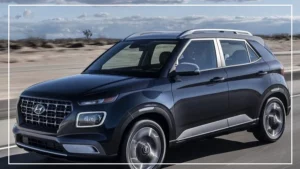The government has made a major decision regarding ride-hailing services like Ola and Uber.
Under the new rule, taxis operating on these platforms will be allowed to run only for 8 years from their registration date.
After 8 years, even if the vehicle is in good condition, it will be retired from commercial use.
This rule will be applied nationwide and is expected to impact thousands of drivers and millions of passengers. Let’s understand its details.
What are the benefits for passengers?
Newer, safer and cleaner taxis:
Old taxis often lack important safety features like airbags, ABS, etc. With the new rule, passengers will get to ride in newer vehicles that are safer, more reliable, and comfortable.
Lower pollution levels:
Older vehicles tend to emit more smoke and harmful gases. The 8-year usage limit means cleaner taxis on roads, helping reduce air pollution.
What are the challenges for drivers?
Financial burden on drivers:
Many drivers have purchased their vehicles on loan and are still paying EMIs. Now, if the vehicle has to be retired after 8 years, it will increase their financial stress.
In addition, rising fuel prices, app commissions, and growing competition are already affecting their income.
Without government support or aid, many drivers may be forced to quit operating taxis.
What will happen to old taxis?
As per Ola and Uber data, about 20% of taxis are over 8 years old. These vehicles will either need to be replaced or shifted to personal use.
However, they can be sold as private cars in smaller towns and cities, which may benefit the second-hand vehicle market.
What can be the solution?
Automobile industry bodies are asking the government for scrappage incentives, easy loans, and discounts to help with this transition.
Fleet management companies might also step in by offering new vehicles on lease or rent to drivers.
This would ease the financial load and also help introduce tech-friendly, modern taxis.
Will electric vehicles get a push?
Yes, definitely. Since drivers will need to purchase new vehicles, electric taxis could become a more affordable and future-ready choice.
Many states already offer EV subsidies and tax benefits. Ola and Uber have also started pilot programs for electric vehicles in a few cities.
Final thoughts: Passengers happy, drivers stressed
This rule brings good news for passengers—they can expect cleaner, safer, and newer taxis. But for drivers, the future is uncertain unless there is support from the government or companies.
At the same time, this change opens new opportunities for electric vehicle adoption and growth in the fleet management business.

























